MARY J. BLIGE / “Do Nothin’ Till You Hear From Me”
Hip hop is keeping jazz alive. Literally. Keeping it relevant. Reminding the youth that there is a tradition that needs to be studied and listened to, especially for those who aspire to become major vocalists.
Although the standard AABA song form is no longer dominant and hip melodies with chord changes no longer define popular vocal music, because of hip hop producers who search out past accomplishments, all is not lost. We may never again produce a genius who is just like Duke Ellington—arguably the greatest 20th century composer of American music, jazz, pop, classical or otherwise—but we will produce another musical genius (think Stevie Wonder), it’s just that the new genius will also be working in new forms, hence no one confuses Stevie with Duke even though Stevie acknowledged his debt to Duke (have you heard "Sir Duke" lately?).
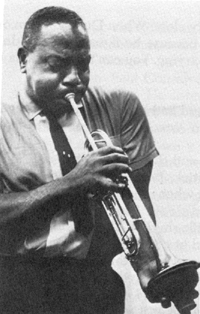 That said, consider “Do Nothin’ Till You Hear From Me,” a song that started out its life as an instrumental: “Concerto for Cootie.” Not only was it an instrumental, it was also a subtle wink at classical music—Cootie was famous for his trumpet techniques which including growls and the uses of mutes, none of which were, ahem, acceptable in the classical approach to trumpet playing. Surely both Duke and Cootie were aware that their concerto playing cousins did not claim these two funky musical relatives.
But a concerto is essentially an instrumental work for orchestra that highlights a soloist or group of soloists. Here was a composition composed for and played by the Duke Ellington Orchestra that highlighted the trumpet playing of Cootie Williams—when was the last time you heard classical musicians referred to as Duke and Cootie? (Indeed, you could do an extended riff on nomenclature, and how this generations current use of stage names is dead up in the decades old tradition of Dukes and Counts, Prez’s and Lady Days. Even if many old heads are too alienated from their children and grandchildren to recognize that the young folk are just carrying on an old tradition, so what? The renaming of ourselves is an overt political statement, a rejection not of our parents but rather of the system that forced the phony English names on us in the first place, a system which rejects our right and insights when we name ourselves and thereby comment both on how we see the world and how we want the world to see us.)
Anyway, for some reason, this week we are dropping political philosophy, but none of the music sounds overtly political. Anyway, anyway (that’s a double take to get back to what I wanted to talk about in the first place), anyway, anyway, what I really wanted to pay homage to is the two schools of Black vocal music in the popular vein: the hot and the cool.
That said, consider “Do Nothin’ Till You Hear From Me,” a song that started out its life as an instrumental: “Concerto for Cootie.” Not only was it an instrumental, it was also a subtle wink at classical music—Cootie was famous for his trumpet techniques which including growls and the uses of mutes, none of which were, ahem, acceptable in the classical approach to trumpet playing. Surely both Duke and Cootie were aware that their concerto playing cousins did not claim these two funky musical relatives.
But a concerto is essentially an instrumental work for orchestra that highlights a soloist or group of soloists. Here was a composition composed for and played by the Duke Ellington Orchestra that highlighted the trumpet playing of Cootie Williams—when was the last time you heard classical musicians referred to as Duke and Cootie? (Indeed, you could do an extended riff on nomenclature, and how this generations current use of stage names is dead up in the decades old tradition of Dukes and Counts, Prez’s and Lady Days. Even if many old heads are too alienated from their children and grandchildren to recognize that the young folk are just carrying on an old tradition, so what? The renaming of ourselves is an overt political statement, a rejection not of our parents but rather of the system that forced the phony English names on us in the first place, a system which rejects our right and insights when we name ourselves and thereby comment both on how we see the world and how we want the world to see us.)
Anyway, for some reason, this week we are dropping political philosophy, but none of the music sounds overtly political. Anyway, anyway (that’s a double take to get back to what I wanted to talk about in the first place), anyway, anyway, what I really wanted to pay homage to is the two schools of Black vocal music in the popular vein: the hot and the cool.
 Ellington was full of these gorgeous melodies that practically begged for lyrics. Bob Russell, a lyricist for both Tin Pan Alley and Hollywood, composed the words that became the popular phrase, “Do Nothin’ Till You Hear From Me.” Russell was most active during the ‘40s and ‘50s and also wrote the lyrics for Ellington’s equally popular “Don’t Get Around Much Anymore.” Born Sidney Keith Russell in Passaic, NJ in 1914, one of Bob’s most recognized lyrics was 1969’s “He Ain’t Heavy, He’s My Brother.” What is of interest about Russell’s collaborations with Ellington is that Ellington attracted talented mainstream writers even though, at the time, Ellington was not a mainstream songwriter. It’s almost like a rap star being attracted to fit hip hop lyrics over country and western melodies; well, not quite, but you get the picture. (?)
(Damn, there are a lot of diversions in attempting to write about one simple song.)
Once the 1943 song had lyrics, all kinds of people took it up, partly because it was a well written, jazz-instrumental-turned-pop-vocal song, partly because it became wildly popular, and partly, no doubt, because it reflected a sentiment and projected a message with which many, many people identified: nobody wants the object of their affections to misunderstand them.
Give the dual branches of Black reactions to our American reality (i.e. outright "hot" revolt on the black-hand side and sly "cool" subversion on the light-hand side), it is not surprising that two approaches sprang up around the song: the hot and the cool. The cool folk interpreted the song as a subtle come on, the hot folk were using the song as a declaration and lyrical love instruction to a reluctant lover.
Two artists who epitomized the cool school are Nat King Cole and Billie Holiday.
Ellington was full of these gorgeous melodies that practically begged for lyrics. Bob Russell, a lyricist for both Tin Pan Alley and Hollywood, composed the words that became the popular phrase, “Do Nothin’ Till You Hear From Me.” Russell was most active during the ‘40s and ‘50s and also wrote the lyrics for Ellington’s equally popular “Don’t Get Around Much Anymore.” Born Sidney Keith Russell in Passaic, NJ in 1914, one of Bob’s most recognized lyrics was 1969’s “He Ain’t Heavy, He’s My Brother.” What is of interest about Russell’s collaborations with Ellington is that Ellington attracted talented mainstream writers even though, at the time, Ellington was not a mainstream songwriter. It’s almost like a rap star being attracted to fit hip hop lyrics over country and western melodies; well, not quite, but you get the picture. (?)
(Damn, there are a lot of diversions in attempting to write about one simple song.)
Once the 1943 song had lyrics, all kinds of people took it up, partly because it was a well written, jazz-instrumental-turned-pop-vocal song, partly because it became wildly popular, and partly, no doubt, because it reflected a sentiment and projected a message with which many, many people identified: nobody wants the object of their affections to misunderstand them.
Give the dual branches of Black reactions to our American reality (i.e. outright "hot" revolt on the black-hand side and sly "cool" subversion on the light-hand side), it is not surprising that two approaches sprang up around the song: the hot and the cool. The cool folk interpreted the song as a subtle come on, the hot folk were using the song as a declaration and lyrical love instruction to a reluctant lover.
Two artists who epitomized the cool school are Nat King Cole and Billie Holiday.
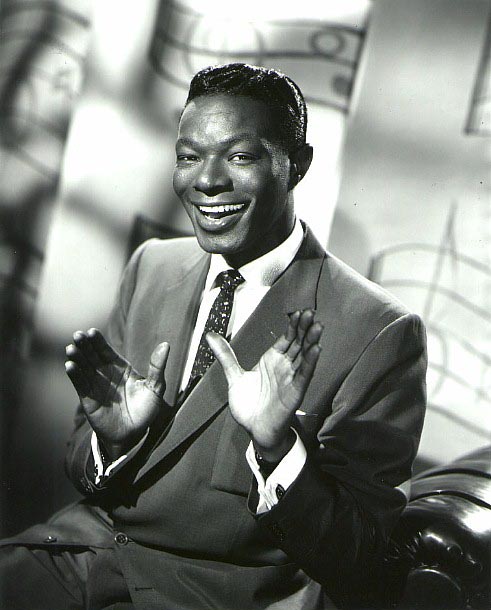 Nat King Cole first made his name as a bebop piano player of prodigious technique. He did not start off as a singer, but when he turned to song, another side of his personality was manifested. There is none of the jiving and jumping around that was the rage of the day a la Cab Calloway and, later on, Louis Jordan. Nat Cole was too cool to sweat like that. His enunciation was precise, and though sincere his emoting was not bombastic, indeed, exactly the opposite: where the gospel influenced singer would scream, the cool dude whispered. What is very, very interesting about Cole’s take on Cootie’s concerto is the way my man sets up a rhythm vamp, a little repeated syncopated figure that bends and reshapes the melody. Indeed, in his own understated way, Cole radically reframes the way the song goes.
Nat King Cole first made his name as a bebop piano player of prodigious technique. He did not start off as a singer, but when he turned to song, another side of his personality was manifested. There is none of the jiving and jumping around that was the rage of the day a la Cab Calloway and, later on, Louis Jordan. Nat Cole was too cool to sweat like that. His enunciation was precise, and though sincere his emoting was not bombastic, indeed, exactly the opposite: where the gospel influenced singer would scream, the cool dude whispered. What is very, very interesting about Cole’s take on Cootie’s concerto is the way my man sets up a rhythm vamp, a little repeated syncopated figure that bends and reshapes the melody. Indeed, in his own understated way, Cole radically reframes the way the song goes.
 Billie Holiday, the ultimate genius of cool vocals, is musically conservative but emotionally devastating. Her behind-the-beat languid phrasing call attention to the meaning of the words as the tension between the music’s tempo and the way Billie phrases her words are exciting, more exciting than if she were shouting. And, in this particular version, we get a tenor saxophone solo from Ben Webster that is the equal of Billie’s lilting, unhurried exploration of loneliness. I know that Billie is an acquired taste, so a number of people are turned off by her sound, but if you listen to the micro-shifts in the timing of her delivery, you will understand how a person with a limited range is able to give such an emotionally expansive reading of a lyric.
Billie Holiday, the ultimate genius of cool vocals, is musically conservative but emotionally devastating. Her behind-the-beat languid phrasing call attention to the meaning of the words as the tension between the music’s tempo and the way Billie phrases her words are exciting, more exciting than if she were shouting. And, in this particular version, we get a tenor saxophone solo from Ben Webster that is the equal of Billie’s lilting, unhurried exploration of loneliness. I know that Billie is an acquired taste, so a number of people are turned off by her sound, but if you listen to the micro-shifts in the timing of her delivery, you will understand how a person with a limited range is able to give such an emotionally expansive reading of a lyric.
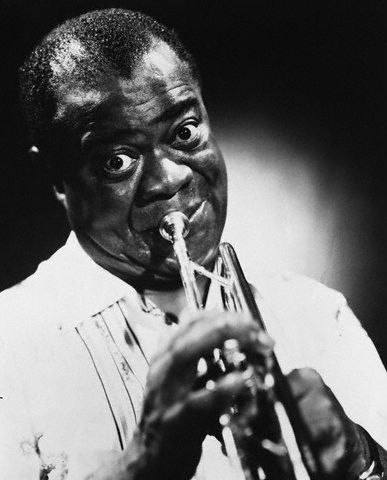 On the hot side, it don’t get no hotter than Pops, the godhead of popular American vocals. This version of “Do Nothin’ ” is taken from a collaboration with Duke Ellington on which Duke sat in on the piano chair and Armstrong’s working band played Ellington compositions. You can feel Pops dig into the song, getting excited with his famous gravel-toned voice. A strong beat comes to the fore now. There is nothing gentle here although it is equally as heartfelt as both Holiday and Cole, albeit Pops mines a different vein, highlighting the hot side of the music.
On the hot side, it don’t get no hotter than Pops, the godhead of popular American vocals. This version of “Do Nothin’ ” is taken from a collaboration with Duke Ellington on which Duke sat in on the piano chair and Armstrong’s working band played Ellington compositions. You can feel Pops dig into the song, getting excited with his famous gravel-toned voice. A strong beat comes to the fore now. There is nothing gentle here although it is equally as heartfelt as both Holiday and Cole, albeit Pops mines a different vein, highlighting the hot side of the music.
 Which brings us to Mary J. and her version, which has taken Cole’s vamps and turned them into 21st century beats, taken Billie’s behind the beat phrasing and mated it with Pops hot pyrotechnics to produce a club song aimed straight at the dance floor. Where we could imagine Billie languishing in a self-reflective mirror, Mary J. is on stage illuminated by a disco ball.
Which brings us back to where we started. This song is taken from Red Hot + Indigo, a joint that celebrates the music of Duke Ellington as interpreted by contemporary popular artists (such as Les Nubians, The Roots, Amel Larrieux and many others), all of them working specifically to raise money for AIDS. The CD as a whole is a musical curio that seldom lives up to the promise inherent in the concept, but when it does, as in Mary J.’s case, it’s an important extension of the black music tradition. There are 17 Duke Ellington songs on this album. If nothing else, a younger generation is introduced to music over fifty years old, music that is their birthright, music that remains emotionally relevant, and thus, hip hop is saving jazz.
—Kalamu ya Salaam
A great record
Which brings us to Mary J. and her version, which has taken Cole’s vamps and turned them into 21st century beats, taken Billie’s behind the beat phrasing and mated it with Pops hot pyrotechnics to produce a club song aimed straight at the dance floor. Where we could imagine Billie languishing in a self-reflective mirror, Mary J. is on stage illuminated by a disco ball.
Which brings us back to where we started. This song is taken from Red Hot + Indigo, a joint that celebrates the music of Duke Ellington as interpreted by contemporary popular artists (such as Les Nubians, The Roots, Amel Larrieux and many others), all of them working specifically to raise money for AIDS. The CD as a whole is a musical curio that seldom lives up to the promise inherent in the concept, but when it does, as in Mary J.’s case, it’s an important extension of the black music tradition. There are 17 Duke Ellington songs on this album. If nothing else, a younger generation is introduced to music over fifty years old, music that is their birthright, music that remains emotionally relevant, and thus, hip hop is saving jazz.
—Kalamu ya Salaam
A great record
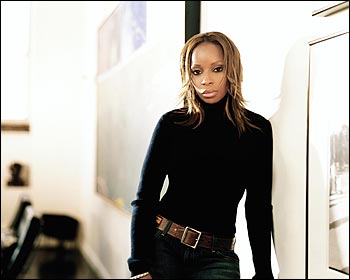 Pop music is cluttered with examples of ideas that sounded good on paper but end up sounding terrible on record. Mary J. Blige’s version of “Do Nothin’ ” is the opposite: its an idea that didn’t sound so good to me on paper but resulted in a great record. Maybe I underestimated Mary. (And why not? She’s been underestimated all her life.) Maybe I didn’t think she had the appropriate ‘coolness’ (to borrow Kalamu’s phraseology) to pull it off. And you know what? She didn’t. She did have the appropriate ‘hotness’ though, in spades. On this record, Mary sounds like one of those larger-than-life big, bad blues singers of old: fierce, emotional, skillful…and baaaaad. And how’s about the scatted mini-refrain in the last minute? Loving it. I only wish Mary made more records that sounded like this one.
To borrow a phrase from Mr. Antwan Patton, Nat’s version is cooler than a polar bear’s toenails. But of course. What else would you expect? The man was the slickest, coolest cat to ever vocally caress a microphone. For me, that one’s a keeper too.
Pop music is cluttered with examples of ideas that sounded good on paper but end up sounding terrible on record. Mary J. Blige’s version of “Do Nothin’ ” is the opposite: its an idea that didn’t sound so good to me on paper but resulted in a great record. Maybe I underestimated Mary. (And why not? She’s been underestimated all her life.) Maybe I didn’t think she had the appropriate ‘coolness’ (to borrow Kalamu’s phraseology) to pull it off. And you know what? She didn’t. She did have the appropriate ‘hotness’ though, in spades. On this record, Mary sounds like one of those larger-than-life big, bad blues singers of old: fierce, emotional, skillful…and baaaaad. And how’s about the scatted mini-refrain in the last minute? Loving it. I only wish Mary made more records that sounded like this one.
To borrow a phrase from Mr. Antwan Patton, Nat’s version is cooler than a polar bear’s toenails. But of course. What else would you expect? The man was the slickest, coolest cat to ever vocally caress a microphone. For me, that one’s a keeper too.
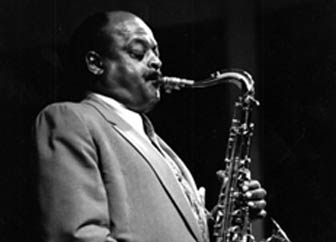 The other version I like is Billie’s. As Kalamu mentioned, Billie’s take is so measured, so leisurely, each phrase protracted just so. And yes, Big Ben’s solo is elegance itself: poised, tuneful, confident, luscious. Yeah. Hip stuff.
—Mtume ya Salaam
The other version I like is Billie’s. As Kalamu mentioned, Billie’s take is so measured, so leisurely, each phrase protracted just so. And yes, Big Ben’s solo is elegance itself: poised, tuneful, confident, luscious. Yeah. Hip stuff.
—Mtume ya Salaam
This entry was posted on Sunday, November 27th, 2005 at 12:57 am and is filed under Cover. You can follow any responses to this entry through the RSS 2.0 feed. You can leave a response, or trackback from your own site.
4 Responses to “MARY J. BLIGE / “Do Nothin’ Till You Hear From Me””
November 27th, 2005 at 10:34 pm
If you by chance have a copy of Quincy Jones’ “Q’s Juke Joint” CD from 2000, check out this version sung by Phil Collins and I think Saxophone solo is by Joe Henderson?
November 28th, 2005 at 6:14 pm
I.love.this!!! The hottest thing would be to mix them all into one song. That would be a technological fusion of styles for this incredible piece of music.
December 2nd, 2005 at 3:15 pm
Thank you My Brother for turning my head into mush with this offering from Mary J. The truth is that I am not a fan of her work. Further truth is that I summarily dismissed her some years ago without so much as a glance back. There was the dim disconnect that you reference regarding Billie Holiday…who has always been in my player since back in the days of hair. Nonetheless this song has tamed either one or both of us and Mary J. will get a few of my dollars on this project alone. Somewhere along the way it seems that Ms B has learned to live inside the music and dance on the lyrics. With this piece she paints the walls with all that she is worth and I can appreciate the effort. My office has been abuzz for the past hour with curious glances and the odd visitor since coming to the site and playing the various versions.
Thank you for the new ears.
March 17th, 2007 at 3:54 pm
Who did the vocal on Duke Ellington’s “Hey, Pretty Baby” and another groups’ “Do Nothing Till You Hear from Me”?
Thanks
Leave a Reply
| top |